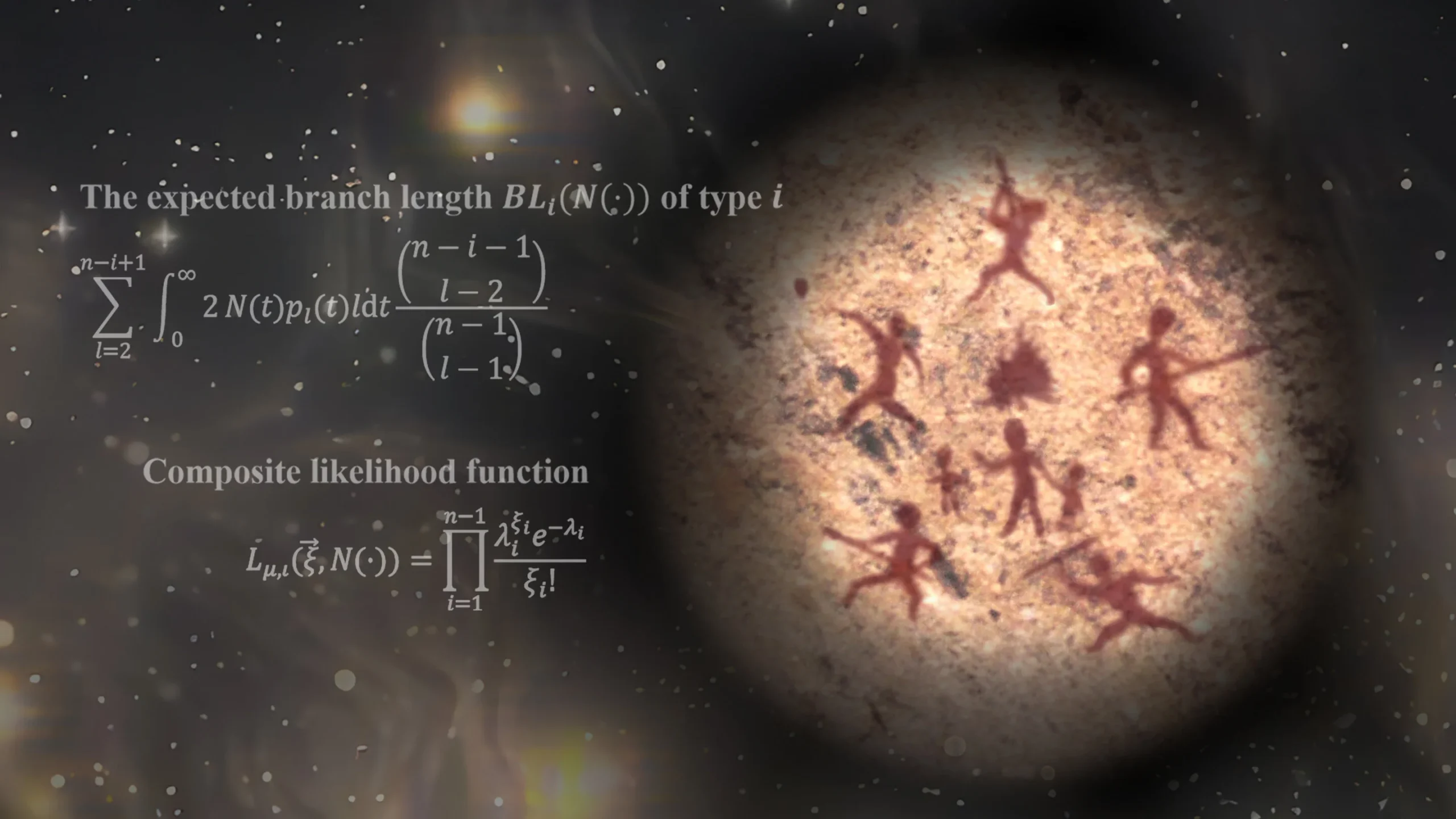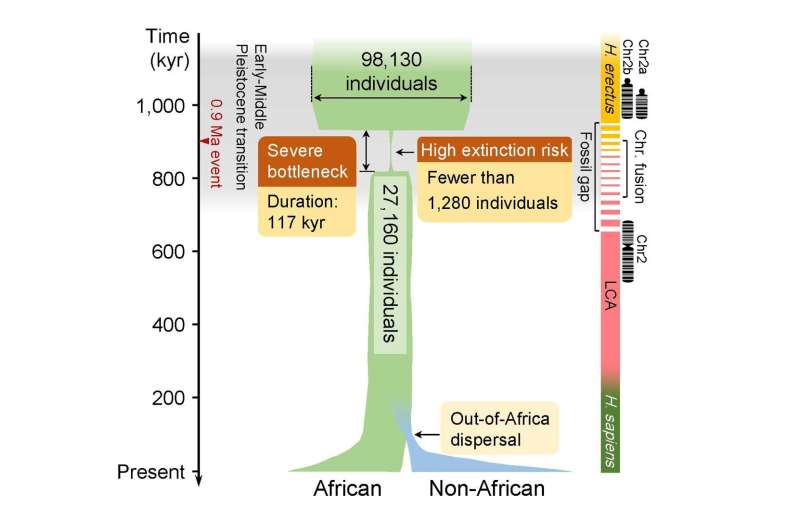Bottleneck of early ancestors could spell end to modern humans
- December 31, 2023
- 0
How did a new method for determining ancient population sizes reveal a major bottleneck in human population that nearly destroyed any chance of humanity as we know it
How did a new method for determining ancient population sizes reveal a major bottleneck in human population that nearly destroyed any chance of humanity as we know it

How did a new method for determining ancient population sizes reveal a major bottleneck in human population that nearly destroyed any chance of humanity as we know it today? The puzzling gap in the African/Eurasian fossil record can now be explained, thanks to a team of researchers from China, Italy and the USA.
Using a new method called FitCoal (fast infinitesimal association time), the researchers were able to pinpoint demographic inferences using modern human genome sequences from 3,154 individuals. The researchers published their findings online in the journal Science.
These findings suggest that early human ancestors went through a long and severe bottleneck in which approximately 1,280 reproductive individuals were able to sustain the population for approximately 117,000 years. Although this study sheds some light on early and middle Pleistocene ancestors, there are still many questions that need to be answered after the discovery of this information.
A large number of genomic sequences were analyzed in this study. Still, “the fact that FitCoal was able to detect a major long-standing bottleneck with even a few sequences is a breakthrough,” says senior author Yun-Xin Fu, an expert in theoretical population genetics at the University of Texas Health Science Center at Houston.
Results obtained using FitCoal to calculate the probability of modern genome sequences showed that early human ancestors experienced an extreme loss of life and therefore a loss of genetic diversity.
“The gap in the African and Eurasian fossil records can be explained chronologically by this bottleneck in the Early Stone Age. “This coincides with the proposed period of significant fossil loss,” says senior author Giorgio Manzi, an anthropologist at Sapienza University in Rome.
Possible reasons for this decline in human ancestors’ populations are primarily climatic: Glaciation events during this period lead to temperature changes, severe droughts, and the loss of other species that could potentially have been used as food sources for human ancestors.

It has been estimated that 65.85% of existing genetic diversity may have been lost due to this bottleneck during the early-to-mid Pleistocene, threatening the minimum number of reproductive individuals for a long period of time, threatening humanity as we know it today.
However, this bottleneck appears to have contributed to speciation; Two ancestral chromosomes may have combined to form what is now known as chromosome 2 in modern humans. Thanks to this information, the last common ancestor of Denisovans, Neanderthals and modern humans (Homo sapiens) was potentially discovered.
We all know that once a question is answered, more questions arise.
“The new finding opens a new avenue in human evolution because it raises many questions, including where people lived, how they coped with catastrophic climate change, and whether natural selection accelerated the evolution of the human brain during a bottleneck.” senior author Yi-Hsuan Pan, Evolutionary and Functional Genomics, East China Normal University (ECNU).
Now that there is reason to believe that a tribal struggle took place between 930,000 and 813,000 years ago, researchers can continue to investigate to find answers to these questions and discover how such a small population survived under difficult and dangerous conditions. Firefighting and a changing climate more conducive to human life may have contributed to a rapid population increase in the late period, about 813,000 years ago.
“These findings are just the beginning. With this information, future goals will be to paint a more complete picture of human evolution during this transitional period from the early Pleistocene to the middle Pleistocene, which will continue to unravel the mystery of early human origins and evolution,” said senior author LI Haipen. . theoretical population geneticist and computational biologist at the Shanghai Institute of Nutrition and Health, Chinese Academy of Sciences (SINH-CAS). Source
Source: Port Altele
As an experienced journalist and author, Mary has been reporting on the latest news and trends for over 5 years. With a passion for uncovering the stories behind the headlines, Mary has earned a reputation as a trusted voice in the world of journalism. Her writing style is insightful, engaging and thought-provoking, as she takes a deep dive into the most pressing issues of our time.